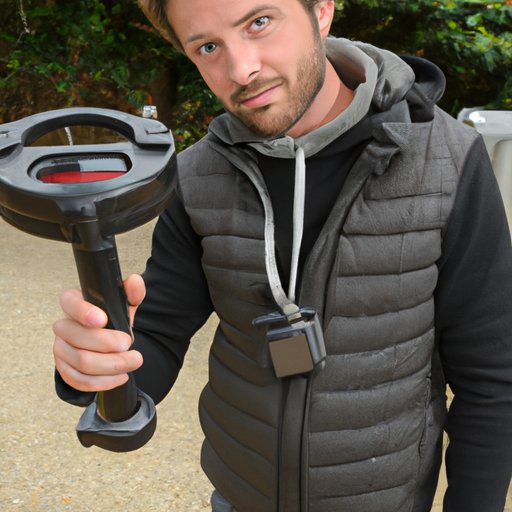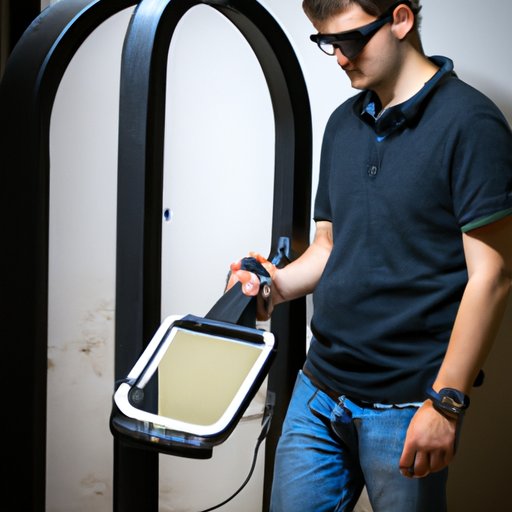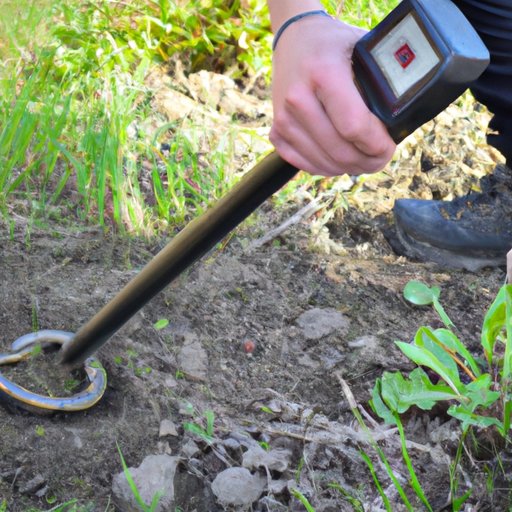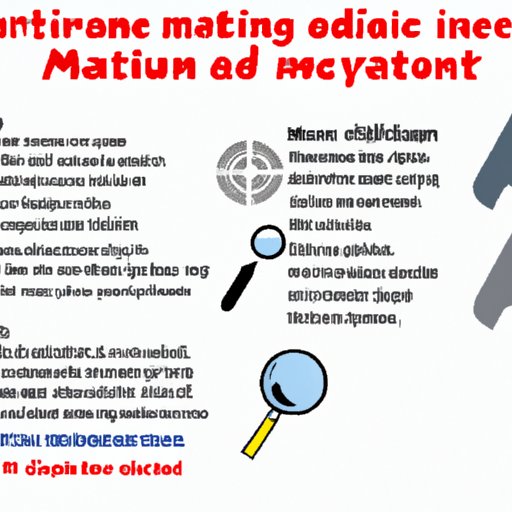Introduction
Metal detectors have become a familiar sight in airports, shopping malls, and other public places. But what is a metal detector and how does it work? In this article, we’ll explore the technology behind metal detectors and how they are used in various settings.
Overview of Metal Detector Technology and How It Works
A metal detector is an electronic device that employs advanced technology to detect the presence of metal objects in the ground or in a person’s body. The main components of a metal detector include a transmitter, receiver, search coil, and control box. When activated, the transmitter produces a magnetic field which is then detected by the receiver. The search coil receives the signal from the transmitter and emits a secondary electromagnetic field. When the secondary field encounters a metallic object, it causes a change in the field which is then detected by the receiver. The control box contains the circuitry which processes the signal and displays the results.

Explaining the Components of a Metal Detector
The four main components of a metal detector are the transmitter, receiver, search coil, and control box. The transmitter sends out a low frequency magnetic field. The receiver detects any changes in the field caused by the presence of metal objects. The search coil is the part of the detector that is placed on the ground and detects the secondary electromagnetic field generated by the transmitter. Finally, the control box houses the circuitry which processes the signal and displays the results.

Examining the Different Types of Metal Detectors
There are three main types of metal detectors: pulse induction (PI), very low frequency (VLF), and beat frequency oscillator (BFO). PI detectors use short bursts of current to create a magnetic field. VLF detectors use alternating current to create a magnetic field which is then modulated by the target metal. BFO detectors use two signals of similar frequency which are then mixed together to produce a third signal. This third signal is then detected by the receiver.
Understanding the Basics of Metal Detection Theory
The fundamentals of metal detection theory involve the use of an electromagnetic field. This field is created when a metal object comes into contact with the search coil. The metal object causes a disturbance in the field which is then detected by the receiver. Additionally, metal objects can cause the field to resonate, creating an even stronger signal which is more easily detected.

Analyzing the Advantages and Disadvantages of Metal Detectors
Metal detectors offer several advantages. They are relatively inexpensive and easy to use, making them ideal for a wide range of applications. Additionally, metal detectors can detect metals at greater depths than other methods such as x-ray machines. However, metal detectors also have some drawbacks. They can be affected by environmental factors such as soil composition and moisture content, which can reduce their effectiveness. Additionally, metal detectors may not be able to detect small or light metals.

Investigating the Best Practices for Using a Metal Detector
In order to maximize the effectiveness of a metal detector, it is important to employ best practices. Ground balancing is one of the most important steps in using a metal detector. This process involves adjusting the sensitivity of the detector to compensate for the local environment. Discrimination is another important technique which involves setting the detector to ignore certain types of metals or objects. This allows the user to focus on specific targets and reduce false positives.
Highlighting Innovative Uses of Metal Detectors
Metal detectors are used in a variety of settings, from archaeological surveys to security screening. Archaeologists use metal detectors to locate buried artifacts and features. Security personnel use metal detectors to screen for weapons and other prohibited items. Metal detectors are also used in industrial settings to locate pipelines and other hidden infrastructure.
Conclusion
In conclusion, metal detectors are an invaluable tool for many practical applications. By understanding the components and types of metal detectors, as well as the basics of metal detection theory, users can ensure that they are getting the most out of their device. Additionally, by employing best practices such as ground balancing and discrimination, users can maximize the effectiveness of their metal detector. Finally, metal detectors are being used in a variety of innovative ways, from archaeological surveys to security screening.
(Note: Is this article not meeting your expectations? Do you have knowledge or insights to share? Unlock new opportunities and expand your reach by joining our authors team. Click Registration to join us and share your expertise with our readers.)
